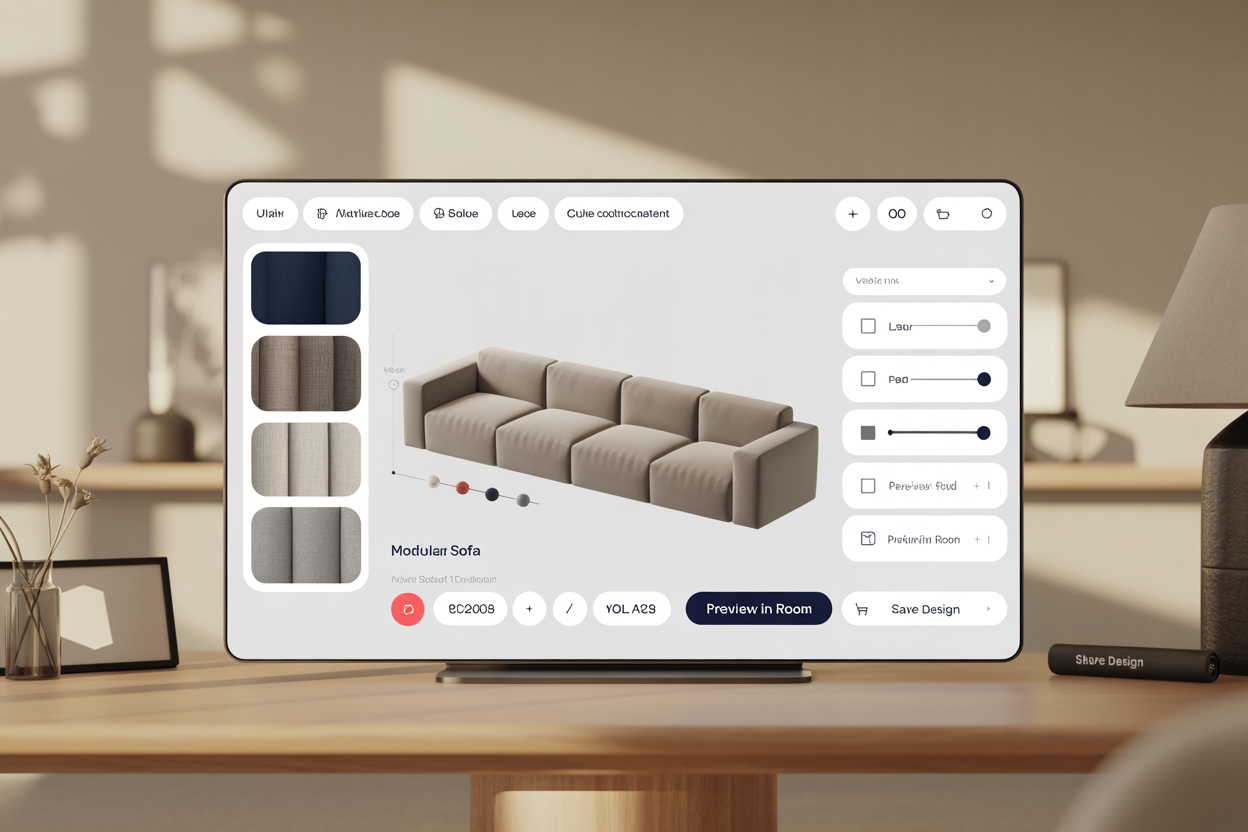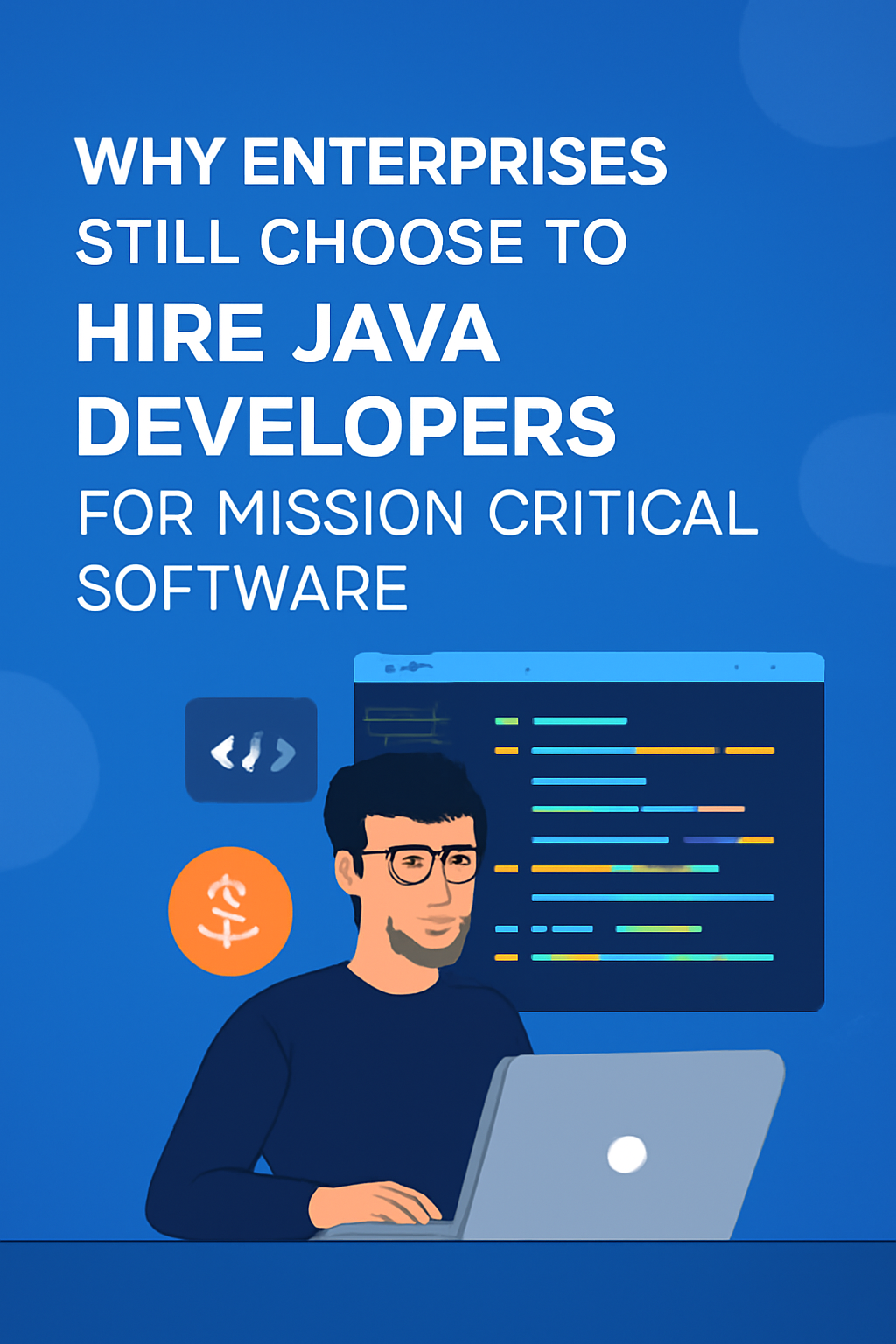Technology
The Best Fitness Trackers for 2024

The Best Fitness Trackers for 2024
In the ever-evolving world of technology, fitness trackers have become indispensable tools for health enthusiasts and those seeking to lead a healthier lifestyle. With the advent of 2024, several new models have hit the market, offering advanced features and improved functionalities. This article provides a detailed overview of the best fitness trackers for 2024, analyzing their features, strengths, and weaknesses to help you make an informed decision.

Pexels.com
Key Features
Before diving into specific models, it’s crucial to understand the key features that define the best fitness trackers. These features include:
- Accuracy of Health Metrics: High-quality fitness trackers should accurately monitor heart rate, steps, sleep patterns, and other health metrics.
- Battery Life: Longer battery life ensures that the tracker remains operational without frequent recharging.
- Display and Interface: A clear, user-friendly display enhances the overall user experience.
- Compatibility: Integration with various operating systems and devices is essential for seamless data syncing.
- Durability: Water resistance and rugged design contribute to the longevity of the device.
- Additional Features: Advanced models offer GPS, music control, and stress management tools.
Analysis of Top Fitness Trackers for 2024
Here’s an in-depth analysis of some of the best fitness trackers available in 2024:
- Apple Watch Series 9
Overview: The Apple Watch Series 9 continues to lead the market with its extensive feature set and integration with the Apple ecosystem.
Features:
- Health Metrics: Advanced heart rate monitoring, ECG, blood oxygen levels, and sleep tracking.
- Battery Life: Up to 18 hours.
- Display: Always-on Retina display with improved brightness.
- Compatibility: Seamless integration with iOS devices.
- Durability: Water-resistant up to 50 meters.
Strengths:
- Comprehensive health monitoring.
- Robust app ecosystem.
- High-quality build and design.
Weaknesses:
- Short battery life compared to competitors.
- Premium price point.
- Fitbit Charge 6
Overview: The Fitbit Charge 6 offers a balance of advanced features and affordability.
Features:
- Health Metrics: Heart rate, sleep tracking, SpO2 monitoring, and stress management tools.
- Battery Life: Up to 7 days.
- Display: Color touchscreen with customizable watch faces.
- Compatibility: Works with both iOS and Android devices.
- Durability: Water-resistant up to 50 meters.
Strengths:
- Excellent battery life.
- Affordable price.
- Comprehensive health tracking.
Weaknesses:
- Limited third-party app support.
- Basic GPS functionality.
- Garmin Vivosmart 5
Overview: Known for its fitness-focused features and durability, the Garmin Vivosmart 5 is ideal for serious athletes.
Features:
- Health Metrics: Advanced sleep tracking, heart rate monitoring, stress tracking, and body battery.
- Battery Life: Up to 14 days.
- Display: OLED touchscreen.
- Compatibility: Compatible with iOS and Android.
- Durability: Water-resistant and rugged design.
Strengths:
- Long battery life.
- Robust fitness and health tracking features.
- Durable build.
Weaknesses:
- Limited smartwatch capabilities.
- No built-in GPS.
- Whoop Strap 4.0
Overview: The Whoop Strap 4.0 focuses on recovery and performance optimization rather than traditional fitness tracking.
Features:
- Health Metrics: Heart rate variability, recovery tracking, sleep analysis, and strain tracking.
- Battery Life: Up to 5 days.
- Display: No display; data accessed via app.
- Compatibility: iOS and Android.
- Durability: Waterproof.
Strengths:
- Detailed recovery and performance analytics.
- No need to charge frequently.
- High level of accuracy.
Weaknesses:
- No display or standalone functionality.
- Subscription-based model.
Comparative Table of Top Fitness Trackers for 2024
| Feature | Apple Watch Series 9 | Fitbit Charge 6 | Garmin Vivosmart 5 | Whoop Strap 4.0 |
| Heart Rate Monitoring | Yes | Yes | Yes | Yes |
| Sleep Tracking | Yes | Yes | Yes | Yes |
| GPS | Yes | Basic GPS | No | No |
| Battery Life | Up to 18 hours | Up to 7 days | Up to 14 days | Up to 5 days |
| Display | Always-on Retina display | Color touchscreen | OLED touchscreen | No display |
| Water Resistance | Up to 50 meters | Up to 50 meters | Water-resistant | Waterproof |
| Compatibility | iOS | iOS and Android | iOS and Android | iOS and Android |
| Price Range | High | Moderate | Moderate | Subscription-based |
Conclusion
Choosing the best fitness tracker for 2024 depends on individual needs and preferences. The Apple Watch Series 9 excels in providing a comprehensive suite of features and seamless integration with iOS devices, though it comes at a premium price. The Fitbit Charge 6 offers a solid balance of features and affordability, making it a great all-around option. For those prioritizing battery life and durability, the Garmin Vivosmart 5 stands out. Meanwhile, the Whoop Strap 4.0 is best suited for users focused on performance and recovery, though it lacks a display and operates on a subscription model.
When selecting a fitness tracker, consider your specific needs—whether it’s advanced health metrics, extended battery life, or a combination of features—to find the model that best fits your lifestyle in 2024.
Technology
Top Technology Universities: Shaping the Future Through Innovation

Introduction
In an era defined by rapid technological change, choosing the right university can set the foundation for a career at the forefront of innovation. Top technology universities combine cutting-edge research, industry partnerships, and hands-on learning to prepare students for roles in artificial intelligence, robotics, cybersecurity, and more. From historic institutions that pioneered engineering to emerging powerhouses leading sustainability efforts, these schools shape the innovators of tomorrow. In this article, we delve into the best technology universities worldwide, highlight their signature programs, and offer insights on how to secure admission and thrive in a tech-driven world.
Criteria for Ranking Top Technology Universities
Before exploring individual schools, it’s important to understand how they earn their reputations:
- Research Output: Peer-reviewed publications, patents, and research grants.
- Industry Partnerships: Collaborations with leading tech companies for internships and joint projects.
- Faculty Expertise: Renowned professors and industry veterans driving innovation.
- Curriculum Breadth: Cutting-edge courses in AI, data science, and emerging technologies.
- Facilities and Labs: State-of-the-art research centers, maker spaces, and supercomputing resources.
- Graduate Outcomes: High placement rates in top tech firms, startups, and research institutions.
- Global Collaboration: International labs, exchange programs, and cross-border projects.
These factors guide prospective students to universities that offer both depth and breadth in technology education.
Massachusetts Institute of Technology (MIT), USA
Why It’s a Leader
- World-Renowned Research: Over 1,000 labs exploring AI, quantum computing, and nanotechnology.
- Entrepreneurial Ecosystem: Howard Hughes Medical Institute and The Engine accelerator support startups.
- Interdisciplinary Approach: Media Lab and Computer Science & Artificial Intelligence Laboratory (CSAIL) break traditional boundaries.
Signature Programs
- 6-3 Program: Integrates engineering with humanities.
- Master’s in Data, Systems, and Society: Prepares leaders for data-driven policy and technology roles.
Admission Tips
- Exceptional math and science scores (SAT/ACT, AP).
- Strong portfolio of research or project experience.
- Personal essays showcasing curiosity and leadership.
Stanford University, USA
Why It’s a Leader
- Silicon Valley Proximity: Direct access to tech giants and venture capital.
- Innovative Culture: d.school fosters design thinking across disciplines.
- Collaborative Research: Joint AI labs with Google and IBM.
Signature Programs
- MS in Computer Science (AI Track): Cutting-edge AI research and applications.
- Design Impact Program: Combines engineering with social entrepreneurship.
Admission Tips
- Demonstrated entrepreneurial projects or hackathon wins.
- Strong letters of recommendation from tech mentors.
- Clear vision for leveraging Stanford’s ecosystem.
ETH Zurich, Switzerland
Why It’s a Leader
- Engineering Excellence: Top rankings in civil, mechanical, and electrical engineering.
- Global Research Collaborations: Partnering with CERN and European space agencies.
- Graduate Outcomes: High employability in European and international labs.
Signature Programs
- MSc in Robotics, Systems, and Control
- MSc in Data Science: Analytics, machine learning, and big data infrastructure.
Admission Tips
- Bachelor’s with strong GPA in engineering or science.
- Proof of English proficiency (TOEFL/IELTS).
- Compelling statement of purpose highlighting research interests.
National University of Singapore (NUS), Singapore
Why It’s a Leader
- Asia’s Tech Hub: Proximity to major tech markets in Asia.
- Innovation District: Fusionopolis and One North research precincts.
- Multidisciplinary Institutes: Smart Nation Innovation Lab and AI Center.
Signature Programs
- MSc in Artificial Intelligence: Foundations and applications across industries.
- Dual Degree in Engineering & Business Analytics
Admission Tips
- Strong academic record in relevant STEM fields.
- Relevant internship or research experience.
- Clear career goals aligned with Singapore’s tech ecosystem.
Tsinghua University, China
Why It’s a Leader
- National Research Projects: Leading China’s space and deep-sea exploration efforts.
- Industry Alliances: Partnerships with Huawei, Alibaba, and Baidu.
- High-Tech Campus: State-of-the-art labs for semiconductors and renewable energy.
Signature Programs
- MEng in Electronic Engineering
- MSc in Computer Science and Technology
Admission Tips
- Excellent performance in the Chinese National College Entrance Examination (Gaokao) or equivalent.
- Strong recommendations from prior professors.
- Research publications or patents.
Imperial College London, UK
Why It’s a Leader
- Engineering Innovation: Leader in medical technology and clean energy research.
- Cross-Disciplinary Centers: Grantham Institute for climate change and sustainability.
- Global Student Body: Diverse perspectives fostering creative solutions.
Signature Programs
- MRes in Biomedical Materials
- MEng in Computing (Artificial Intelligence)
Admission Tips
- UK A-levels or IB scores with strong STEM focus.
- Evidence of team-based engineering or research projects.
- Personal statement highlighting innovation.
How to Choose the Right University for You
Consider these factors to find your best fit:
- Specialization vs. Generalization: Do you want a broad engineering foundation or deep expertise in AI?
- Location and Culture: Campus life, internships, and job markets vary widely.
- Financial Investment: Compare tuition, scholarships, and living costs.
- Industry Connections: Evaluate partnerships with companies and research institutions.
- Alumni Network: Strong alumni can open doors to jobs and funding.
Visiting campuses—virtually or in person—and speaking with current students provides valuable insights.
Future Trends in Technology Education
As technology evolves, universities adapt to new frontiers:
- AI-Driven Learning: Personalized coursework powered by machine learning.
- Virtual and Augmented Reality Labs: Immersive simulations for medical and engineering training.
- Sustainable Engineering: Curricula focused on renewable energy and circular economies.
- Quantum Computing Centers: Cross-disciplinary hubs for quantum research and applications.
- Global Collaboration Networks: Shared research platforms and student exchanges accelerated by digital connectivity.
Staying ahead of these trends ensures graduates remain competitive in the job market.
Conclusion
The top technology universities of 2025 share a commitment to innovation through cutting-edge research, industry partnerships, and interdisciplinary learning. From MIT and Stanford in the United States to ETH Zurich in Europe and NUS in Asia, these institutions equip students with the skills and vision to tackle global challenges—whether in AI, robotics, clean energy, or biotech. As technology continues to advance, choosing a university that aligns with your interests, values, and career goals is essential. By evaluating factors like research strengths, location, and industry ties, you can find a program that not only educates you but also empowers you to shape the future. Embrace the opportunity to learn, invent, and lead at one of these premier institutions, and join the ranks of innovators driving real change worldwide.
Technology
The Power of a 3D Furniture Configurator for Modern Retail

Introduction
Shopping for 3D furniture used to be a slow, uncertain process. You’d visit a showroom, take a few pictures, maybe measure your space, and then try to remember what a certain sofa looked like once you got home. Today, all of that has changed.
With interactive 3D tools, people can now explore and customize furniture from the comfort of their homes—viewing every angle, changing materials, adjusting dimensions, and even placing it virtually in their space. These experiences are not just more convenient; they’re revolutionizing how decisions are made, and they’re raising expectations for what online shopping should feel like.
At HexaCoder, we build digital tools that bring products to life. In this blog, we’ll explore how these technologies work, what makes them so effective, and why furniture brands of all sizes should consider integrating them into their digital strategy.
What Is a Configurator and Why Does It Matter?
Let’s start with the basics. A configurator is an interactive platform that lets users customize a product in real time. Instead of choosing from a few preset styles or colors, shoppers can create their ideal version of a product—changing finishes, materials, layouts, and even dimensions on the fly.
This is especially powerful when it comes to furniture. Every home is different. Every corner, color palette, and lifestyle has its own needs. Giving users control over how furniture looks and functions makes the buying process personal and engaging. It’s no longer a guessing game—it’s an experience.
Bridging the Gap Between Digital and Physical Worlds
One of the biggest challenges in online shopping is the imagination gap. Customers can’t touch the fabric or feel the weight of a table. They can’t always tell if something will fit the vibe or dimensions of their space. This is where immersive visualization steps in.
With a 3D interface, users can rotate, zoom, and explore products from every angle. Many tools also support augmented reality, allowing customers to place a digital version of the item directly in their room using their phone or tablet camera. The result? Confidence. They know what they’re getting, and they feel good about hitting “buy.”
Customization Is the New Standard
Today’s shoppers expect options. They don’t want just “blue” or “beige.” They want to pick between velvet and linen, matte or gloss, brass or black hardware. Configurators allow brands to offer endless variations—without needing to keep every option in stock or photograph every combination.
From an operational perspective, this is game-changing. Instead of showcasing 50 different versions of a product across separate listings, everything happens in one dynamic model. This makes the site cleaner, the inventory management easier, and the user experience smoother.
Real-World Application: A Modular Sofa Example
Imagine you’re shopping for a modular sofa. You want a specific layout that fits your living room, a color that matches your walls, and cushions that feel right for movie nights.
With the help of a 3D tool, you could:
- Start with a base configuration
- Add or remove sections depending on space
- Try out different fabric options with one click
- Adjust the leg style and frame material
- View the design in 360 degrees
- Drop it into your actual room using your phone’s camera
This kind of interaction builds emotional investment. You’re not just picking something off a shelf—you’re designing something for your life.
Business Benefits Beyond the Interface
While these tools are great for shoppers, they’re equally powerful for the brands that use them. Businesses that implement interactive 3D customization often see significant improvements in key performance areas:
- Higher conversion rates: Shoppers are more likely to purchase when they feel in control and fully informed.
- Fewer returns: Visualizing the product accurately reduces surprises and dissatisfaction.
- Longer time on site: People enjoy the experience and explore more deeply.
- More user-generated content: Customers love sharing their custom designs on social media.
- Stronger data insights: Brands learn what colors, materials, or sizes are most popular.
All of this adds up to smarter marketing, better product development, and a more loyal customer base.
Built for Every Kind of Customer
Whether you’re selling directly to consumers or working with interior designers and corporate buyers, these tools make the process more collaborative and efficient.
For everyday shoppers, it’s all about ease of use and excitement. For professionals, it’s about precision and flexibility. Designers can download 3D models for their own layouts, request exact specifications, or send configurations to clients for approval. Everyone wins.
Accessible Anywhere, on Any Device
At HexaCoder, we make sure every solution we build works across platforms—desktop, tablet, and mobile. No downloads, no apps, no technical hiccups. Whether a customer is browsing from their couch or on-site with a client, the experience is smooth and fast.
Thanks to web-based 3D technology, even heavy visualizations load quickly and respond instantly. With built-in performance optimization, there’s no need to worry about slowing down your site or requiring expensive hardware.
A Scalable, Future-Proof Investment
The beauty of a well-designed configurator is that it grows with you. Start with a few key products, then expand your library over time. Add new customization options, introduce seasonal colors, or offer exclusive finishes for certain markets.
These tools also integrate with your existing systems—whether it’s your eCommerce backend, CRM, or digital asset management platform. Automation can be built in to send orders directly into your production pipeline, or to sync customer choices with your sales team.
As technology evolves, so does the experience. You can add voice support, AI-based design suggestions, or even move toward full virtual showrooms in the future. The possibilities are endless.
Choosing the right pieces for your home can be overwhelming, especially when relying solely on photos or measurements. That’s where a 3D furniture configurator makes a difference. It allows you to visualize and customize products in real time, offering a much more interactive and confident buying experience. Whether you’re a homeowner redecorating your space or a business showcasing products online, a furniture 3D configurator enhances decision-making by displaying every detail—materials, colors, dimensions, and layouts. For those specifically focused on personalizing interiors, a home furniture 3D configurator takes things a step further, enabling users to virtually place items in their actual rooms to see how everything fits before making a purchase.
Where We Come In
At HexaCoder, we bring your products to life in the most engaging way possible. Our team of developers, 3D artists, and UX designers work together to build custom configurators that match your brand, your customers, and your goals.
Whether you’re just getting started or looking to upgrade an existing system, we help make the complex simple—and the digital unforgettable.
Technology
Why Enterprises Hire Java Developers for Mission-Critical Software

Introduction
Despite the emergence of modern languages and frameworks, Java remains a dominant force in enterprise software development. Whether it’s powering banking systems, healthcare platforms, logistics solutions, or government services, Java’s role in mission-critical applications is as relevant in 2025 as it was decades ago.
This blog explores the key reasons why enterprises continue to hire Java developers for their most important digital projects—covering everything from technical strengths to ecosystem reliability and security.
The Legacy and Longevity of Java
Java has stood the test of time. Introduced in the mid-90s, it has consistently adapted to new architectural paradigms, from monoliths to microservices, and more recently, cloud-native development. Enterprises that have relied on Java for years find it easier to modernize within the same ecosystem than to rewrite in a newer, less-proven language.
Why it matters:
- Existing codebases and systems are often built on Java.
- Java ensures long-term support (LTS) and stability.
- Hiring Java developers allows continuity and seamless system evolution.
Robust Performance and Scalability
Java is designed to handle high-load applications with maximum uptime. Its performance is powered by the JVM (Java Virtual Machine), which provides platform independence, automatic memory management, and optimization features like Just-In-Time (JIT) compilation.
Real-world impact:
- Telecoms process millions of transactions per second.
- Financial institutions handle concurrent trades with low-latency.
- E-commerce platforms manage massive seasonal traffic spikes.
Enterprises hire Java developers because they understand how to build systems that scale horizontally and vertically without compromising speed or reliability.
Enterprise-Grade Security
Security is a cornerstone of mission-critical software. Java provides a wide range of built-in features like:
- Bytecode verification
- Exception handling
- Access modifiers for encapsulation
- Secure class loading mechanisms
Additionally, Java developers are accustomed to implementing modern security practices, including OAuth2, JWT-based authentication, secure API gateways, and integration with identity providers.
In industries like healthcare, fintech, and insurance, this level of security isn’t optional—it’s required. That’s why companies continue to hire Java developers who understand compliance and security frameworks.
Spring Ecosystem: A Backbone for Enterprise Development
The Spring Framework, and more recently Spring Boot and Spring Cloud, provide Java app developers with a mature toolkit for building production-ready applications with ease.
Benefits of Spring for enterprises:
- Dependency injection and modular architecture
- Microservices support
- Seamless database integration
- Built-in testing and monitoring support
These capabilities make it easier for developers to build, test, and deploy applications at enterprise scale. The widespread use of Spring is a major reason companies prefer to hire Java developers.
Proven Track Record in Mission-Critical Use Cases
Let’s take a look at some of the sectors where Java still dominates:
- Banking & Finance: Core banking platforms, fraud detection engines, and trading systems are largely built in Java due to its high throughput and thread management.
- Healthcare: Medical records, appointment systems, and telemedicine tools require the security and consistency that Java ensures.
- Government: Tax processing, benefits systems, and public records platforms often run on Java due to its stability and long-term support lifecycle.
- E-commerce & Logistics: Order management, inventory control, and delivery tracking rely on the reliability of Java-based backends.
In all these sectors, downtime or bugs can lead to massive consequences. That’s why enterprises choose to hire Java developers who have experience working in these environments.
Cross-Platform Compatibility
Java’s promise of “Write Once, Run Anywhere” still holds true. It can run on virtually any device with a compatible JVM—whether it’s a local server, a container in the cloud, or even IoT devices in logistics networks.
Benefits:
- Unified codebases
- Cost reduction in maintaining platform-specific versions
- Seamless integration with DevOps and cloud pipelines
Hiring Java developers allows enterprises to maintain a lean codebase and maximize platform compatibility.
Large Talent Pool and Knowledge Base
One major advantage of Java is the vast availability of skilled developers. Whether you’re looking to hire in-house engineers, offshore teams, or freelance experts, the Java talent pool is deep and diverse.
For enterprises, this means:
- Faster hiring cycles
- Easier team scaling
- Lower training costs
Companies prefer to hire Java developers because they can find talent with specialized experience (e.g., Java + Kafka, Java + AWS, Java + Microservices) more easily compared to newer languages.
Strong Tooling and IDE Support
Java development benefits from industry-leading Integrated Development Environments (IDEs) like IntelliJ IDEA, Eclipse, and NetBeans. These tools enhance productivity with:
- Smart code completion
- Real-time error detection
- Integrated debugging
- Refactoring tools
Strong tooling support ensures fewer bugs, faster releases, and higher code quality—a big win for enterprise-grade software projects.
Java in the Cloud-Native Era
Java is not stuck in the past. In fact, modern innovations have made it more cloud-friendly than ever:
- Spring Boot & Kubernetes: Enables microservices deployment
- GraalVM: Reduces memory footprint and cold start times
- Quarkus & Micronaut: Java frameworks optimized for serverless and edge computing
These advancements allow companies to continue using Java while leveraging modern infrastructure. They hire Java developers who can work with cloud-native stacks, CI/CD pipelines, and container orchestration.
Strong Community and Vendor Support
A vibrant community and multiple vendors back Java:
- Community Resources: Forums like Stack Overflow and user groups offer free support.
- Vendor Backing: Oracle, IBM, Red Hat, and others provide commercial support and certifications.
- Open-Source Momentum: Projects like OpenJDK ensure Java remains free and adaptable.
Enterprises rely on Java developers who tap into this vast knowledge base and vendor expertise to solve complex challenges quickly.
Enterprise-Grade Tooling
Java developers benefit from mature development tools that boost productivity and quality:
- IDEs: IntelliJ IDEA, Eclipse, and NetBeans offer advanced code assistance and debugging.
- Build Tools: Maven and Gradle automate compilation, testing, and deployment.
- CI/CD: Jenkins, Bamboo, and GitLab CI streamline continuous integration and delivery.
These tools enable teams to maintain high standards in mission-critical environments, making experienced Java developers a strategic hire.
Easier Maintenance and Upgrades
Long-running systems require ongoing updates and bug fixes. Java’s clear syntax and modular design support:
- Readable Code: Strong typing and structured packages make it easy to understand large codebases.
- Modularity: Java Platform Module System (JPMS) helps break applications into replaceable parts.
- Backward Compatibility: New Java versions maintain support for legacy code.
Enterprises prefer Java developers who can quickly adapt and extend existing systems, ensuring continuity and reducing risk.
Talent Availability and Training
Java remains one of the most taught programming languages in universities, resulting in:
- Large Talent Pool: More qualified candidates for critical roles.
- Abundant Training Resources: Online courses, bootcamps, and certifications help developers upskill.
- Community Events: Conferences like JavaOne and local meetups drive knowledge sharing.
Enterprises hire Java developers because they can find, train, and retain skilled professionals to support mission-critical initiatives.
Use Cases in Mission-Critical Industries
Java powers systems in sectors where failure isn’t an option:
- Banking and Finance: High-frequency trading platforms, payment gateways, and risk analysis tools.
- Telecommunications: Network management, billing systems, and real-time monitoring.
- Healthcare: Electronic health records (EHR), patient management, and telemedicine platforms.
- Retail and E-Commerce: Inventory management, checkout processing, and recommendation engines.
Java developers bring domain knowledge and best practices to these industries, ensuring scalability, security, and compliance.
Conclusion: A Strategic Investment in Stability and Scale
For enterprises, mission-critical software is not just about writing code—it’s about trust, security, compliance, and future-readiness. Java offers all of these in abundance.
When you hire Java developers, you’re not just getting coders—you’re getting engineers with:
- Proven architectural knowledge
- Deep experience in enterprise frameworks
- A mindset built around security, scalability, and stability
That’s why, in 2025 and beyond, Java remains the go-to choice for organizations that can’t afford to fail. Whether you’re modernizing a legacy platform or building new cloud-native solutions, hiring skilled Java developers remains a strategic advantage.
-
Business2 years ago
Cybersecurity Consulting Company SequelNet Provides Critical IT Support Services to Medical Billing Firm, Medical Optimum
-
Business2 years ago
Team Communication Software Transforms Operations at Finance Innovate
-
Business2 years ago
Project Management Tool Transforms Long Island Business
-
Business2 years ago
How Alleviate Poverty Utilized IPPBX’s All-in-One Solution to Transform Lives in New York City
-
health2 years ago
Breast Cancer: The Imperative Role of Mammograms in Screening and Early Detection
-
Sports2 years ago
Unstoppable Collaboration: D.C.’s Citi Open and Silicon Valley Classic Unite to Propel Women’s Tennis to New Heights
-
Art /Entertainment2 years ago
Embracing Renewal: Sizdabedar Celebrations Unite Iranians in New York’s Eisenhower Park
-
Finance2 years ago
The Benefits of Starting a Side Hustle for Financial Freedom






























